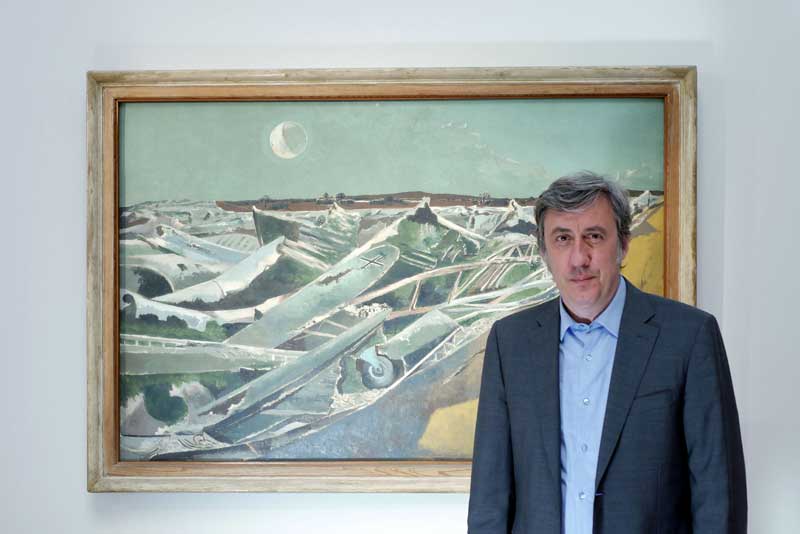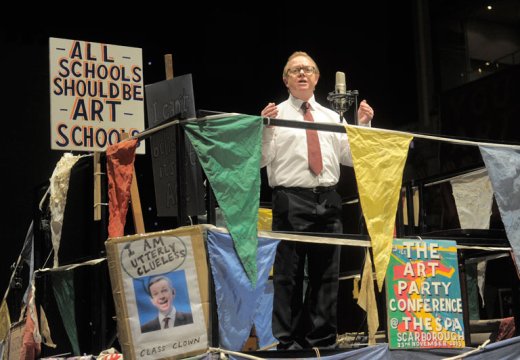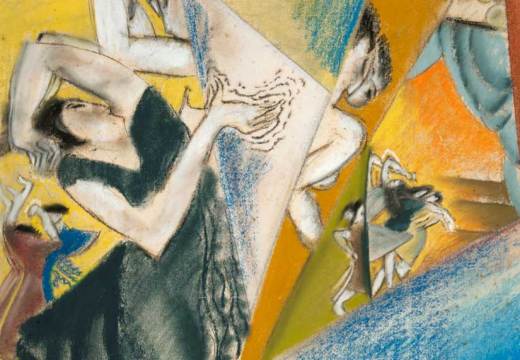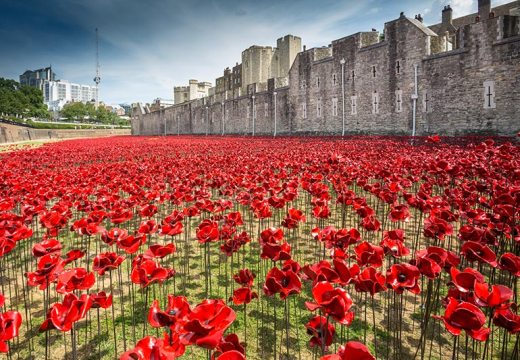‘British Art at War: Bomberg, Sickert and Nash — Paul Nash: The Ghosts of War’
In the first episode of a three-part series on ‘British Art At War’, Andrew Graham-Dixon waxes lyrical – by way of plentiful pictorial analysis – over war artist Paul Nash, whose relationship with nature, his primary and once pastoral subject, was devastated by two wars.
Nash went to serve for Britain in the First World War in 1914. However, while at the front in 1917, he fell into a trench. Stretchered home to England with broken ribs, the incident meant the artist narrowly avoided the start of the Battle of Passchendaele only a few days later, in which his entire regiment was killed.
His experience in combat had already provided inspiration enough for his work; Nash’s post-war painting underwent a dramatic change of style. Graham-Dixon credits Nash with inventing a new kind of war art through nature, painting to ‘honour the ghosts of the dead’ and tell the horrors that befell soldiers.
The hour-long programme returns repeatedly to why he did not paint human figures. Recognising Nash throughout as chiefly a landscape artist, the assertion that Nash was in some way ‘unable’ to directly represent soldiers in human form, depicting them only abstractly as ‘ghosts’, doesn’t quite hold.
Influenced by surrealism in the early 1920s, Nash became the ‘pre-eminent painter of the enigma’, suggests Graham-Dixon. This is explored far more convincingly, with examples of his work with found objects and photography, and close-up images of his striking paintings. Nash was appointed an official war artist once again during the Second World War, this time with a fascination for the airborne. Nash suffered from severe asthma, and his health deteriorated in the 1940s. He carried on painting landscapes, more idyllic than before, until he died in 1946.
Although links between the personal and the artistic are often overwrought, the first instalment of this series serves an effective biographical retrospective, and a prime example of the effects of war on the creative mind.
First broadcast 14 September 2014 at 9pm, BBC Four. Now available on BBC iPlayer.
Related Articles
The Apollo Podcast July/August: The Imperial War Museum Reopens
Lasting Legacies: the reopening of the IWM London
Unlimited access from just $16 every 3 months
Subscribe to get unlimited and exclusive access to the top art stories, interviews and exhibition reviews.














![Masterpiece [Re]discovery 2022. Photo: Ben Fisher Photography, courtesy of Masterpiece London](http://www.apollo-magazine.com/wp-content/uploads/2022/07/MPL2022_4263.jpg)
Why are fathers so absent from art history?